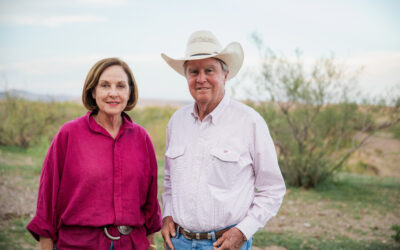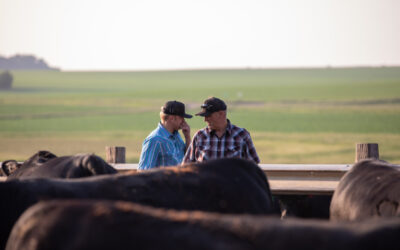
When the Plan B scores an A+
“I was another one of those that some people don’t want to mess with: the small guys,” Mark says, noting he never found an eager feeding partner. Although it might seem like a lifetime ago now, he didn’t forget.

Instead, when Mark took the lead at Irsik and Doll Feed Yard near Garden City, Kan., it propelled him to do more: more sorting, more communication, more watching out for the little guy.
That includes ranchers like Troy Hadrick of Faulkton, S.D.
In last week’s, “Following the Calves” update, we talked about the 2016-born calves making their way to Kansas, but what happens to their heifer mates?
“We retain most of our heifers. About 90% of them, we’ll give them a chance to breed,” the rancher says. After one round of artificial insemination (AI), he turns bulls out for one cycle before ultrasounding the females in August.
“We leave it up to those heifers, ‘Do you want to be a mama or not?’ We put a fair amount of reproductive pressure on those heifers to get bred,” he says. “It really sets up the rest of their career because they’re going to calve as early as anything in the herd that following year.”
When they don’t stick, Hadrick has a “Plan B.”
Last year, 23 open heifers shared a trailer with calves from another area ranch, arriving at Irsik and Doll on August 18.
“That way they can still make money, just in a different fashion,” Hadrick says.
The heifers were harvested in December, after gaining 4.83 pounds (lb.)/day and converting at 5.15 lb. feed/lb. of gain. They made 74% Certified Angus Beef ® (CAB®) brand and Prime, with 954 lb. average hot carcass weight (HCW).

“At the end of the day, you have to pay the bank of Rome. That’s why I’ve always thought the total dollars per head is a very valuable number,” Mark says of the final analysis. These heifers gave up some yield grade discounts, “to help increase the dressing percent because the performance was so good,” he says, noting the quality grade was a bonus.
When Troy posted those results on his personal Facebook page, some wondered what’s the catch?

These kind of results are why the cattle feeder is happy to field questions from first-time customers and to work with ranchers of any size.
“You go through a lot of discussions with them about what you do with the information you get back, how we do stuff, how we sort,” Mark says. “There’s a lot of questions.”
But those questions, they lead to answers. In Troy’s case, they’re leading to pretty steep improvements.
Check back next month when we see how the next generation is shaping up during a calving season update to our series.
May your bottom line be filled with black ink,
Miranda
PS–To catch Troy’s story from the start, read “Rapid change,” “Proud to pass it on,” and “Not in South Dakota Anymore.”
You can also visit ranches in Oklahoma and Montana in our other “Following the calves,” series installments.
You may also like
An Unforgiving Land
What makes a ranch sustainable? To Jon, it’s simple: the same family, ranching on the same land, for the last 140 years. The Means family never could have done that without sustainability. Responsible usage of water, caring for the land and its wildlife, and destocking their herd while the land recovers from drought.
System Over Scale
For Dallas Knobloch, it’s not about being the biggest feedyard—it’s about building a high-quality system that works. Today, with Tory’s wife Sadie and daughter Ivy, the Knobloch family owns and operates 4K Cattle. They feed 2,500 cattle at eight locations within 10 miles of home, manage 1,000 acres of crops and run a 125-head cow herd, all near Hills, Minn.
Working for Premiums
The commercial Angus rancher from Collyer, Kansas, came back for daily homework in 1999 after a year at college. For 25 years now, he’s studied all the ways to grow his family’s W6 Cattle cow-calf herd with Angus at the base. Guided by data, Walt worked to improve the herd from zero Primes to averaging 60 percent. Learning what drives premiums prompted improvement.



